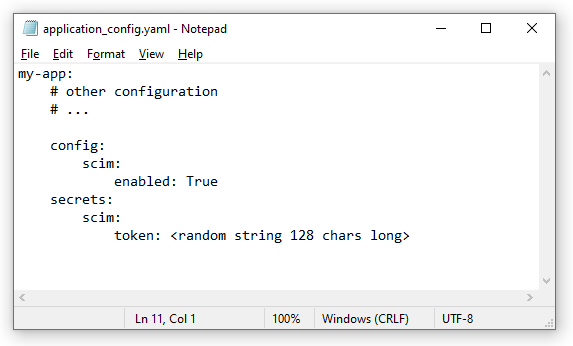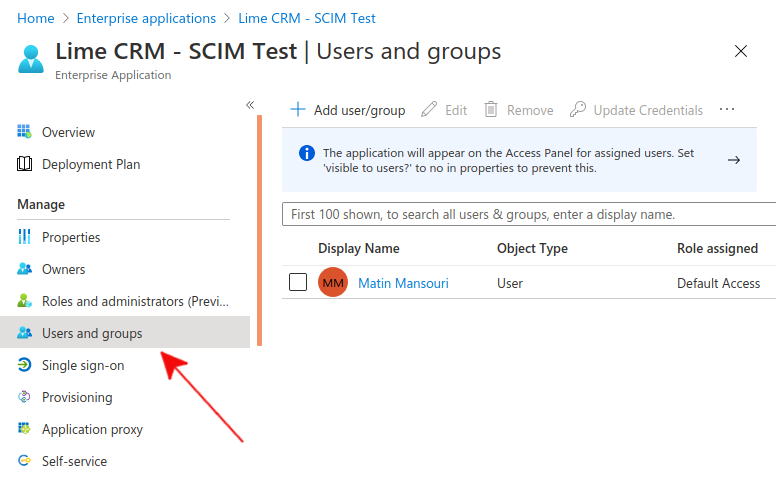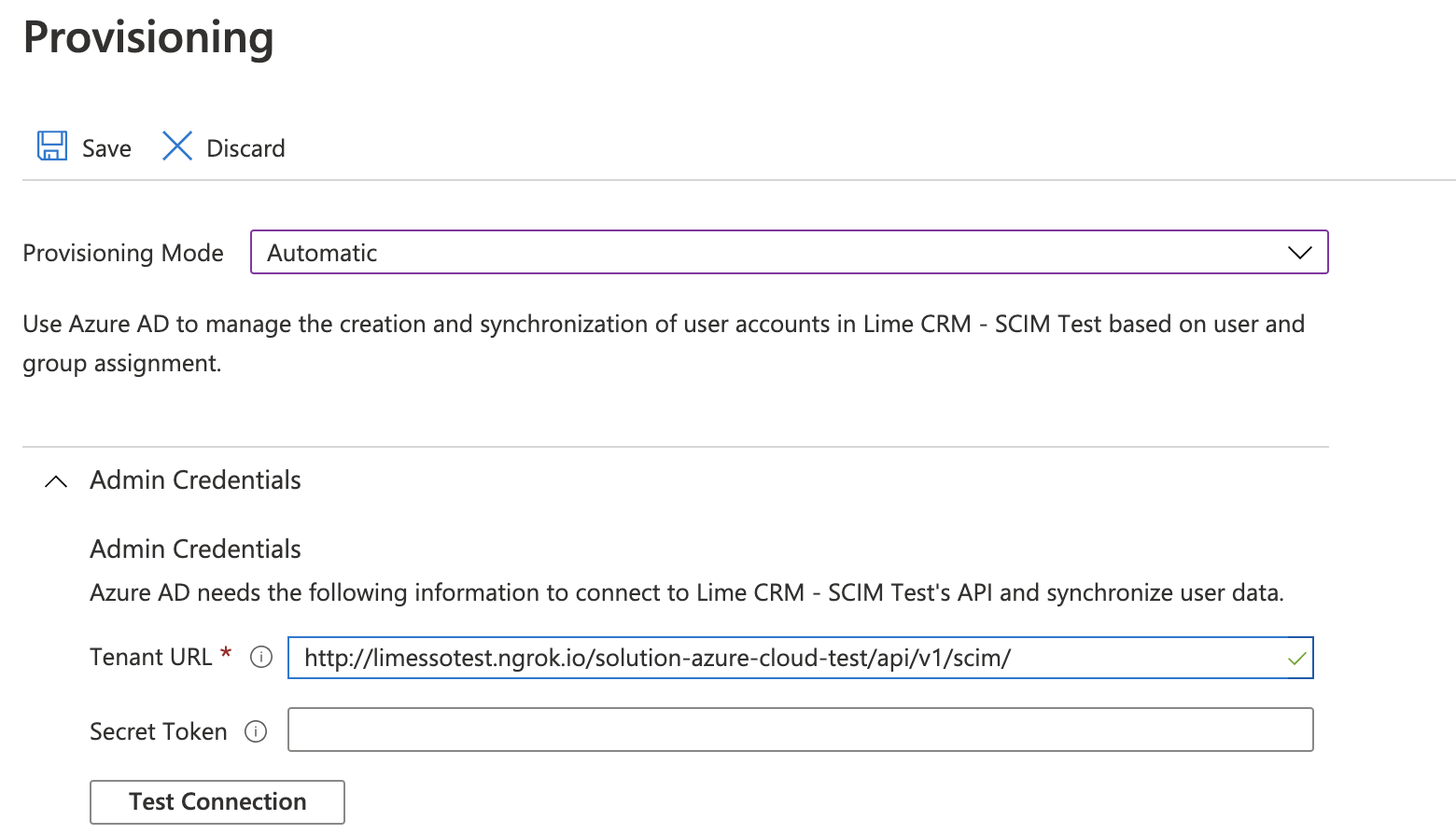Provisioning users and groups in Azure AD¶
The user/group provisioning service enables the synchronization of users and groups between Azure AD and Lime CRM. This service implements the SCIM standard (System for Cross-domain Identity Management), which uses a RESTful API to automatically provision/de-provision users and groups that exist in Azure AD.
Requirements¶
To be able to use the provisioning service, Azure AD login for Lime CRM must be enabled and configured. Please refer to this guide on how to set up Azure AD login.
Configuration - Lime side¶
Set the application configuration as shown below (refer to application config docs if you have no experience with it).
-
In the config part, we specify if the SCIM feature that enables user provisiong is set for the application.
-
In the secrets part, we have to specify a pre-shared key (token) which we also need to provide in the Azure SCIM configuration, as will be explained later. One way to generate this token is this:
python -c "import secrets; print(secrets.token_hex(128))"

Configuration - Azure AD¶
To configure user provisioning:
- Go to "Enterprise Applications" and select your Lime CRM application.
- Make sure that the application contains some users and/or groups by clicking on "Users and groups" in the side bar. If there are none, assign some user(s) to your application.

- Select "Provisioning" in the side bar.
-
If this is the first time, set up provisioning as follows:
- Click on the "Get started" button and choose Automatic provisioning mode.
- In the Admin Credentials section, enter a URL of the following format
in the Tenant URL field:
http://{root_url}/{application_name}/api/v1/scim/. Replace the rootURL and application_name parts with the ones exctracted from your application URL, as shown below.

- In the Secret Token field, provide the token that you generated for the application configuration part in Lime CRM (token should be 128 length char string).
- Test the connection and if successful, save the provisioning.
-
Now you can start the provisioning process, which by default synchronizes the data every 40 minutes. You can also use "Provision on demand" to test the synchronization, but be aware that it only syncs users and not groups.
Limitations¶
Be aware of the following limitations:
- Removing a user or group from your application in Azure does not delete your user from the Lime CRM database after the synchronization. Instead, the user/group will be deactivated (aka "soft delete").
- Our current implementation supports a basic set of attribute mappings (included below for reference). Note that the attributes are mapped to field labels in Lime CRM.
| Azure AD Attribute | Lime CRM Field Label |
|---|---|
| userName | username |
| displayName | fullname |
| name.familyName | lastname |
| name.givenName | firstname |
| emails[type eq \"work\"].value | primaryemailaddress |
| emails[type eq \"home\"].value | secondaryemailaddre |
| active | active |
| externalId | sid |
| id | id |
| phoneNumbers[type eq \"work\"].value | businesstelephonenumber |
| phoneNumbers[type eq \"mobile\"].value | mobiletelephonenumber |
| phoneNumbers[type eq \"home\"].value | hometelephonenumber |
| urn:ietf:params:scim:schemas:extension:enterprise:2.0:User:manager | responsiblecoworker |